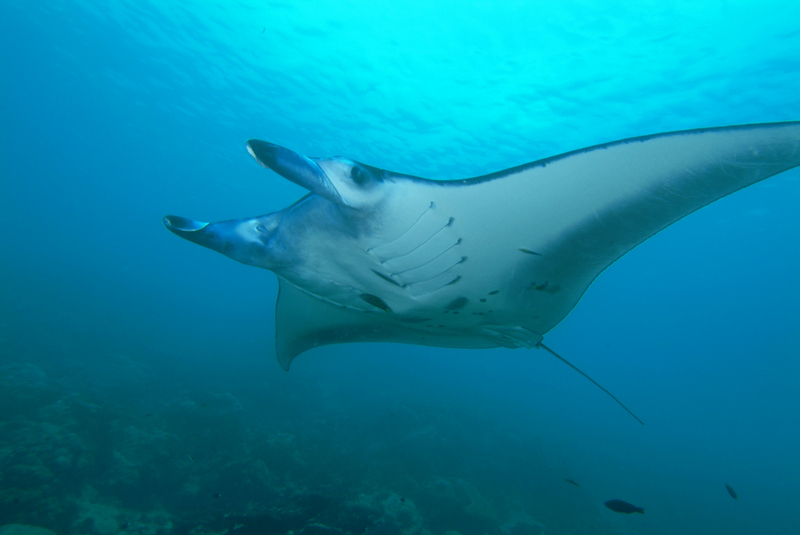We're open daily! View holiday hours
Science News
Mantas on the Raydar
August 4, 2014
by Dannie Holzer

Much as ornithologists track great bird migrations through the air, marine biologists attempt to learn about their subjects by tracking movements through the water. This is easier said than done, especially when it comes to the more elusive pelagic ocean dwellers, such as manta rays. They often travel too far below the surface to allow homing beacons to transmit data.
“You only get information for where animals surface, but there’s a lot you want to learn about what happens under the water,” says Doug McCauley, who got his doctorate at Stanford and is now an assistant professor at UC Santa Barbara.
So how do you track an animal that can be so hard to find? Go where it’s been seen most frequently in the wild of course! For McCauley, it involves taking a small team to the remote and beautiful Palmyra Atoll in the north Pacific. The hard life of a researcher…
(If McCauley’s name sounds familiar, it might be because we’ve featured his work before in Science Today. He was one of the co-authors on the conservation and social conflict study we covered last week; and two years ago, we covered a really interesting study he published on the connection between birds and trees on land in Palmyra and the plankton and giant manta rays in the nearby lagoons.)
“There is very little known scientifically about manta rays," says McCauley. “If we want to understand what habitats are important to them or how to address their vulnerability or even assess it, we need to learn some basic things about their ecology. So we did just that.”
Manta rays not only dive deeply but also travel great distances. Luckily Palmyra’s lagoons are the perfect spot to rendezvous with the rays because the cartilaginous fish use the shallow areas to find food and as a nursery to protect their young. Employing a novel combination of research tools, the scientists examined how the manta rays use lagoons, what particular habitat microfeatures are important, and what drivers make the fish come and go from Palmyra’s lagoons. “We used high-resolution animal tracking tools to describe in as much detail as we could the ecology of the mantas and their connection to this particular marine habitat,” McCauley explains.
Researchers took advantage of the lagoons’ single open water entrance by fitting it with an acoustic camera, turning sonar signals into videos of manta ray traffic and revealing the underwater behaviors of the rays—providing not only beautiful and interesting displays of their movements, but also allowing researchers to see how very frequently the lagoon is used. (Click on the link, the visual is stunning!)
“Lagoons are often very imperiled places, so that was certainly part of our interest,” McCauley says. “Palmyra's lagoons and the mantas that use them are protected. However, lagoons elsewhere have been compromised. Fishing, boat traffic and habitat degradation all may negatively affect mantas in less remote lagoons.”
The researchers also used stable isotope analysis (a chemical assay of a tissue biopsy) to provide an integrative view of what the animal ate in previous months. They matched the chemical signature of the mantas to that of zooplankton collected in the lagoons, verifying that this habitat serves as an important feeding ground.
“Using mathematical modeling we determined that many of the manta rays we encountered took around 80 percent of their energy from lagoon plankton,” McCauley explains. “This discovery that lagoons can contribute such an important amount of food and energy to manta rays highlights the need to motivate management interventions in lagoons.”
“More and more there is evidence that even the most mobile organisms have some areas they return to or some preferential routes of migration,” says Stanford’s Fiorenza Micheli. And this gives conservation policymakers a concrete goal for protecting the manta rays other large marine animals.
“We can do something about the habitats that are relatively close to home and relatively easy to manage,” McCauley says.
The research was recently published in Marine Biology.
Image: /Wikipedia